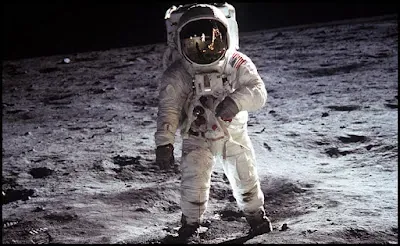Effects of space travel Living in space has serious side effects on the human body. Bone erosion (LAS) occurs. The deadly side effects of being in space are long lasting. You will be surprised to know these side effects.
Washington, Reuters. A significant link between space tourism and plans to colonize the moon has found that living in space has serious side effects on the human body. The bones wear out (LAS), they become weak and the pressure on the heart also increases. This information has come out from a study done on 17 astronauts. The study has found out what and how much effect space travel can have on the body. Along with this, an attempt has also been made to know what measures should be taken to prevent it.
Changes in the body of astronauts came in the midst of plans for space tourism, study on 17 astronauts revealed – lack of gravity weakens bones, adverse effect on blood flow also affects the cardiovascular system and the ability to see How long does it take to compensate for the loss
Lead author of the study, published in the journal Scientific Reports, and Professor Lee Gabel of the University of Calgary, said that it was previously known that astronauts' bones are affected after a long stay, but this time we have seen them until a year after their return to Earth. Astronauts have been closely studied to find out how long and how long the damage to the bones takes.
Study on 14 men and three womenThe study was conducted on 14 male and three female astronauts. Their average age is 47 years and they stay in space for four to seven months. The average of their stay in space is five and a half months.
Loss equal to two decades in six months
One year after returning to Earth, the astronauts' tibia (the main bone of the leg below the knee) was found to have a 2.1 percent lower bone mineral density. Not only this, there was a decrease in the capacity of the tibia by 1.3 percent. Nine of these 17 astronauts could not compensate for the lack of bone mineral density.
Only fifty percent can be compensated
Gabel said that the bone loss of astronauts in six months of space travel is the same as in two decades of elderly living on Earth. In astronautics, only fifty percent of this loss is compensated. The effect on bones is due to microgravity.
Radiation also increases the risk of cancer
Gabel further said that microgravity also has an effect on the functioning of the heart. Astronauts experience more blood pooling in the upper part of the body due to the flow of blood to the legs without gravity. This can affect the cardiovascular system and vision.
increases the risk of cancer
Radiation also has an effect on the health of astronauts because when they go from Earth to space, they come under more influence of the Sun's radiation. This also increases the risk of cancer. Gabel said that we do not yet have complete information about the long-term damage to the body from space travel of more than six months.
Many space missions are planned
The study assumes significance as it prepares for some ambitious space missions. NASA is going to send astronauts to the Moon in the year 2025. After this, preparations are being made to send astronauts to Mars as well. It is also worth mentioning that private companies have already taken steps in the direction of space tourism.
This is the cause of bone damage
The bones of astronauts decrease because there is no gravity in space and due to this the weight of their body does not fall on the feet. For this reason, the bones that bear the weight under normal conditions on Earth do not feel this weight in space. Gabel said that space agencies will have to take steps related to exercise and nutrition to stop this damage.
Such a bad condition happens after returning to earth
During space travel, the microscopic bone rods of bones become thinner and some lose contact with each other. When the astronaut returns to Earth, the width of the bone rod increases, but those that were broken do not recover. In this way the bone structure of astronauts is permanently changed. The astronauts included in this study went on space travel in the last seven years. The identities of these astronauts have not been disclosed. Although it is mentioned that he is associated with the space agencies of America, Canada, Europe and Japan.


Post a Comment